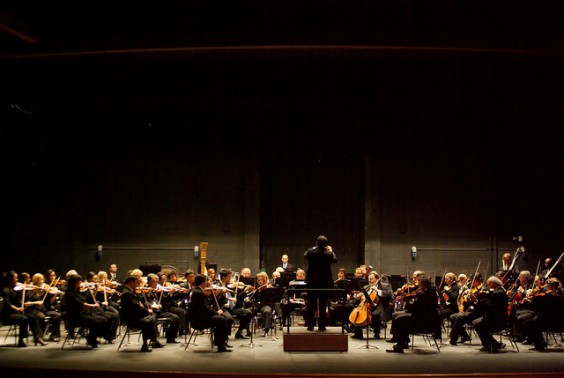Cultural Diplomacy
by Yaghoub Yadali translated by Parvaneh Torkamani / December 1, 2014 / No comments
Cultural exchanges between Iran and the States can spark diplomatic progress – but not until artists feel safe enough to participate.

The Pittsburgh Symphony Orchestra postponed its performance in Tehran this year. Photo via Flickr user: Student Association
In January of this year, the news that the Pittsburgh Symphony Orchestra was considering traveling to Iran attracted much attention in the local and Iranian press. The performance, which would have been the orchestra’s first in Tehran in fifty years, was postponed. In both countries, another piece of news was met with objections from conservative and extremist presses when the arts assistant to the Minister of Culture and Islamic Guidance of Iran traveled to Pittsburgh.
In Iran, the conservative press criticized these activities for being musical or cultural diplomacy, and attacked the assistant to the minister. Iranian conservatives staunchly oppose any kind of relationship between Iran and America. Meanwhile, reformist groups have shown an interest in encouraging a cultural relationship, particularly in sports and the arts. In America, the situation is basically the same. Robert Moir, the Pittsburgh symphony’s senior vice president of artistic development and audience engagement, believes that symphony orchestra can accomplish historic symbolic breakthroughs” in the form of cultural diplomacy missions.
When the diplomatic relationship between two countries, for whatever reason, is strained, sports and the arts ease tension. This was evidenced when the American ping-pong team traveled to China in the 1970s and the New York Philharmonic went to North Korea in 2008.
In recent years, American and Iranian sports teams have enjoyed a close relationship that aroused no controversy. Volleyball and wrestling teams from both countries have traveled to Iran and the United States to compete, with the support of the respective sports federations and state departments.
But in terms of artistic exchange, the situation is more complicated and sensitive. As far as I know, in the last thirty-six years no fiction writers or filmmakers have traveled to America with the coordination or even agreement from their government officials. If such trips took place, they were operated on individual responsibility and ingenuity. Of course, the Oscars are an exception: for a few years now, Iranian cinema officials have entered representative films into the Oscars. But even in this regard, policies are contradictory. The previous, conservative Iranian government nominated A Separation, but when the movie won in the category of best foreign film, and a wave of happiness went through Iranian people and artists, the authorities reacted to the award with caution.
I have lived in America for the last two years. When I talk to American creatives, I often notice their enthusiasm and interest in traveling to Iran and collaborating with artists and writers there. But they worry about their safety in Iran. This approach is the truth among some Iranian artists, who because of the dangers they may experience after returning to Iran from America, either forgo a trip to America or during the trip act very cautiously.
Even though news that the Iranian government official will travel to Pittsburgh is happy news for writers like myself – perhaps this will make artistic exchanges between the two countries a greater possibility – until artists and writers feel safe, there will not be a real opportunity to cultivate a relationship between the two countries.




